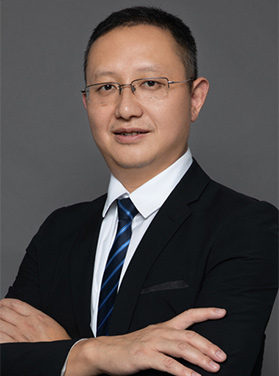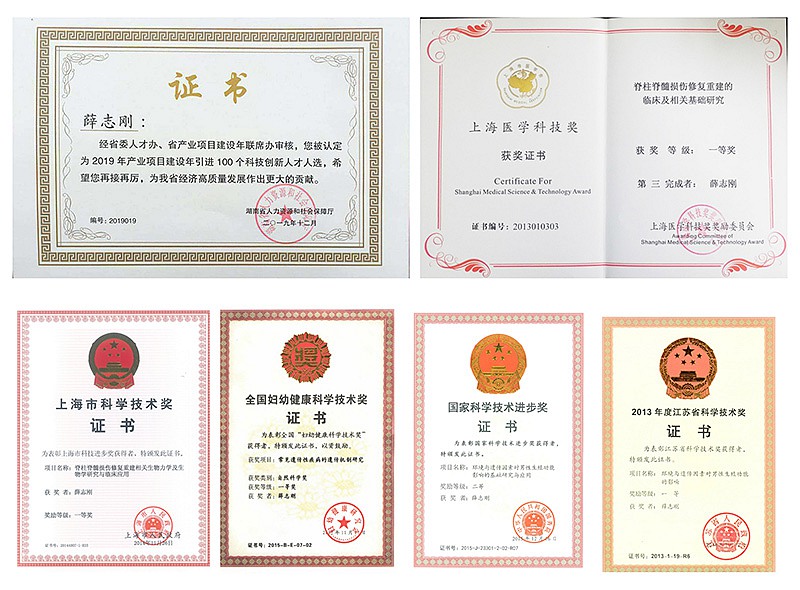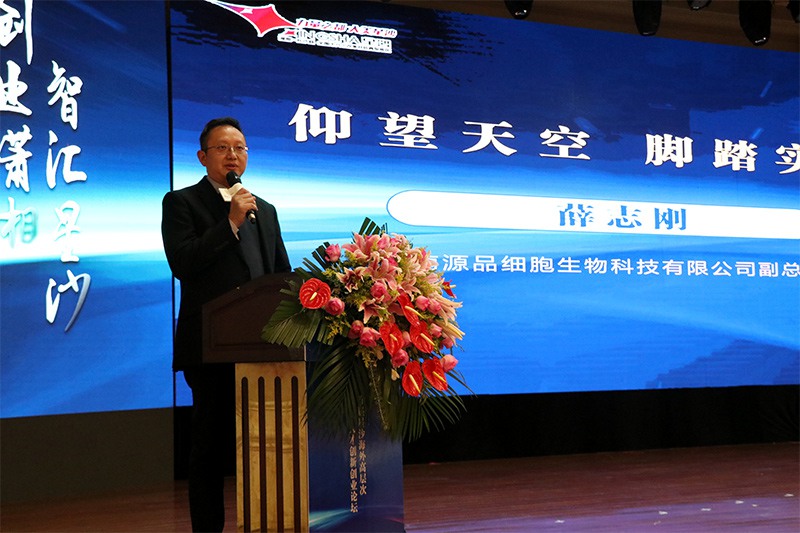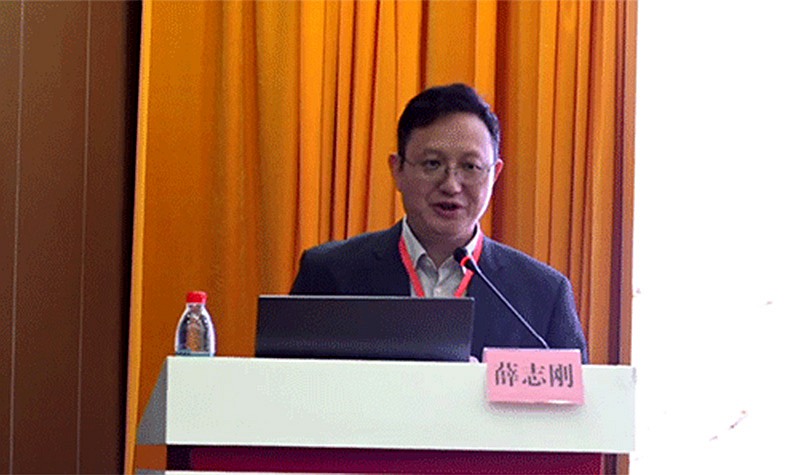Xue Zhigang

Xue Zhigang Professor
Professor of Stem Cell Research Center, Department of Regenerative Medicine, Tongji University
Chief Technology Officer of Yuanpin Biotech
Using single-cell RNA sequencing technology, he uncovered the genetic programs of early human and mouse embryos. The research findings were published in Nature, marking the first time Chinese scientists had published such an article in the journal. This breakthrough is expected to have a profound impact on the purification, classification, and clinical treatment of stem cells.
● Professor and Doctoral Supervisor at the Stem Cell Research Center of the Department of Regenerative Medicine, Tongji University, and the Stem Cell Clinical Translation Center of Tongji Hospital
● A domestic top-tier Class B innovative talent introduced by Hunan Province and a national-level industry leader
● Chief Technology Officer of Yuanpin Biotech
Professor Xue has led three projects funded by the National Natural Science Foundation of China and served as a sub-project leader in the National Key R&D Program. He has published more than 20 SCI papers, with the highest single-paper citation exceeding 270 times, applied for multiple patents, and received numerous awards, including the Second Prize of the National Science and Technology Progress Award, the First Prize in Natural Science of the Maternal and Child Health Science and Technology Award, the First Prize of Shanghai Medical Science and Technology Award, the First Prize of the Shanghai Science and Technology Progress Award, and the Jiangsu Science and Technology Award.

A New Era of
Single-cell Sequencing Technology!
Single-cell genomics aims to study individual cells through omics-based approaches. In recent years, with the advancement of technology, this emerging field has been rapidly maturing. In July 2012, Nature Biotechnology published a landmark single-cell sequencing method — Smart-Seq. Smart-Seq can generate full-length cDNA covering the entire transcriptome, a capability that remains rare among single-cell sequencing methods even today.
In May 2016, Professor Xue Zhigang’s team published their self-developed sequencing technology — scMT-seq in Genome Biology. This method enables the simultaneous analysis of a cell’s transcriptome and methylome, revealing the direct relationship between DNA methylation and gene expression at the single-cell level. Using this technology, the team further completed correlation analyses between X chromosome inactivation and infertility across different developmental stages of early embryos in both humans and cynomolgus monkeys. These findings are expected to help reduce the occurrence of abnormal embryo pregnancies.
Mesenchymal Stem Cells for the Treatment of COVID-19:
A Series of Major Scientific Discoveries!
At the beginning of 2020, when the COVID-19 pandemic broke out, Professor Xue Zhigang led the Yuanpin Biotech research team in an all-out effort to tackle this scientific challenge. Within just ten days, they achieved a series of major technological breakthroughs. The team conducted in-depth research and discussions with the frontline clinicians from cooperative hospitals such as The Second Xiangya Hospital of Central South University, The Third Xiangya Hospital of Central South University, The Second Hospital, University of South China, and Nanhua Hospital Affiliated to University of South China, leading to the development of a scientifical clinical study protocol for the treatment of COVID-19 with stem cells. The project titled “Key Technology Research and Clinical Application Demonstration of Umbilical Cord Mesenchymal Stem Cells for the Treatment of Novel Coronavirus Pneumonia” was approved by the Department of Science and Technology of Hunan Province and was among the first batch of emergency projects to combat COVID-19 in Hunan Province.
Yuanpin Biotech’s clinical study protocol for the treatment of COVID-19 integrates expertise from infectious diseases, thoracic medicine, respiratory medicine, cell biology, and molecular biology. The protocol formulates a comprehensive, scientific, rational, safe, and effective clinical application scheme, covering treatment course design, administration methods, operational procedures, dosage forms, dosages, active ingredients, indications, contraindications, emergency handling, and efficacy evaluation indicators and criteria. Personalized treatment strategies were developed focusing on three aspects: Prevention of COVID-19, prevention of progression from mild/moderate to severe cases, and improving rescue rates and reducing mortality in severe and critical patients.
During the scientific research, the team employed proprietary single-cell subpopulation fractal analysis combined with high-throughput sequencing technologies, making groundbreaking discoveries regarding the mechanism of action of stem cells for the treatment of COVID-19. These findings lay a solid foundation for the future development of stem cell drugs and technologies. Yuanpin Biotech has applied for 5 related international invention patents and 16 domestic invention patents. Additionally, three major research papers will be published in top international medical journals.
Spreading Knowledge and Staying True to the Original Intention!

▲ Professor Xue Zhigang invited to deliver a keynote speech at the First Xingsha Overseas High-level Talent Innovation and Entrepreneurship Forum

▲ Professor Xue Zhigang invited to attend the First Huxiang Maternal and Child Health Summit Forum, presenting insights on the clinical advances of neonatal stem cells

▲ Professor Xue Zhigang invited to participate in the lecture on the research progress and application of stem cell technology
Research Projects and Talent Programs
Research project | Research topic | No. | Time | Progress | Participation |
National Key R&D Program | Cellular Programming in Human Embryonic Development and Mechanisms of Gamete/Embryo-derived Diseases (The Process and Mechanism of Cellular Programming and Reprogramming in Early Human Embryonic Development) | 2017YFC1001301 | 2017.07-2020.12 | Ongoing | Principal investigator (PI) |
General Project of the National Natural Science Foundation of China | Study on the Mechanism of PGC-1α Signaling Pathway Affecting Mitochondrial Replication and Activation in Human Arrested Embryos | 81771651 | 2018.01-2021.12 | Ongoing | PI |
National Key R&D Program | Basic Research on the Establishment and Application of Assisted Reproductive Population and Offspring Cohorts in the Chinese Population (Study on the Effects and Mechanisms of Pregnancy Factors on Offspring Health) | 2016YFC1000208 | 2016.07-2021.06 | Ongoing | Participant |
Shanghai Science and Technology Commission Basic Research Project | Study on the Mechanism of Infertility Caused by Imbalance of the Metabolic Regulatory Network During Mitochondrial Activation of Preimplantation Embryos | 16JC1404700 | 2016.07-2019.06 | Completed | PI |
Tongji University “Central University Basic Research Fund” Project | Study on the Mechanism of Mitochondrial Replication and Activation in Early Human Embryos Based on the PGC-1α Signaling Pathway | 2016.01-2017.12 | Completed | PI | |
Cooperation Project with Shanghai Tongji Biomedical Technology Co., Ltd | Translational Application Study of Human Umbilical Cord Mesenchymal Stem Cells in the Clinical Treatment of Premature Ovarian Failure | 2015.10-2017.10 | Completed | PI | |
Key Project of the National Natural Science Foundation of China | Study on the Molecular Mechanism of the Correlation Between X Chromosome Inactivation and Abnormal Embryonic Development | 81430026 | 2015.01-2019.12 | Completed | PI |
Science and Technology Project of the Department of Science and Technology of Jiangsu Province | Technology Research and Development of Reproductive Medical Products for China (Guangxi) and ASEAN | BM2014052 | 2014.07-2016.12 | Completed | PI |
Shanghai “Dawn Program” Project | Epigenetic Regulation During Early Human Embryonic Development | 13SG22 | 2014.01-2016.12 | Completed | PI |
Shanghai Health and Family Planning Commission Research Project | Screening of Standardized Molecular Markers of Cells in the Treatment of Spinal Cord Injury with Stem Cells | XBR2013094 | 2014.01-2017.01 | Completed | Participant |
General Project of the National Natural Science Foundation of China | Mechanistic Study and Drug Screening for Neurodevelopmental Abnormalities Based on Fragile X Syndrome iPSC Cell Model | 81271258 | 2013.01-2013.12 | Completed | PI |
973 Program | Study on the Regulatory Network of Functional and Region-specific Neuron and Glial Cell Generation | 2012CB966303 | 2012.01-2016.12 | Completed | Participant |
General Project of the Natural Science Foundation of Jiangsu Province | Study of Human iPSC-RPE Transplantation for Age-related Macular Degeneration | DK2011321 | 2011.07-2014.07 | Completed | PI |
973 Program | Regulatory Networks and Intervention Strategies of Tissue Stem Cells in Organ Aging and Regeneration | 2011CB966204 | 2011.01-2015.12 | Completed | Participant |
International Cooperation Project of the Ministry of Science and Technology | Basic and Preclinical Research and Product Development of Stem Cell Therapy | 2011DFB30010 | 2011.01-2013.12 | Completed | Participant |
National Natural Science Fund Youth Project | Construction and Functional Study of Enhanced Tumor-specific Killing Vectors | 30500302 | 2006.01-2008.12 | Completed | PI |
Awards
1. 2015: Second Prize of the National Science and Technology Progress Award by the State Council for the project "Basic Research and Application of the Effect of Environmental and Genetic Factors on Male Reproductive Function";
2. 2015: First Prize in Natural Science of the Maternal and Child Health Science and Technology Award by Maternal and Child Health Research Association for the research project "Study on the Genetic Mechanism of Common Genetic Diseases";
3. 2014: First Prize of the Shanghai Science and Technology Progress Award by Shanghai Municipal People's Government for the research project "Biomechanical and Biological Research and Clinical Application of Spinal Cord Injury Repair and Reconstruction";
4. 2014: First Prize of the Jiangsu Science and Technology Award by the Department of Science and Technology of Jiangsu Province for the research project "Effect of Environmental and Genetic Factors on Male Reproductive Function";
5. 2013: First Prize of the Shanghai Medical Science and Technology Award by Shanghai Medical Association for the research project "Clinical and Related Basic Research on Spinal Cord Injury Repair and Reconstruction".






